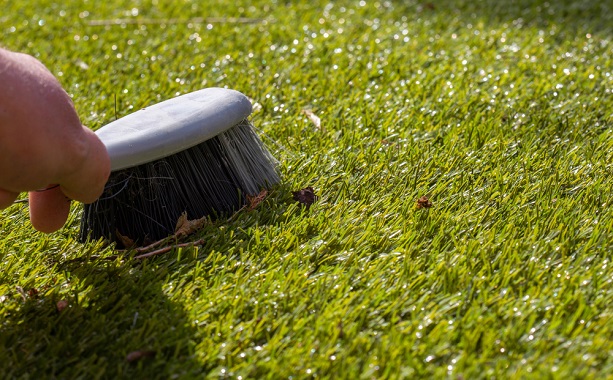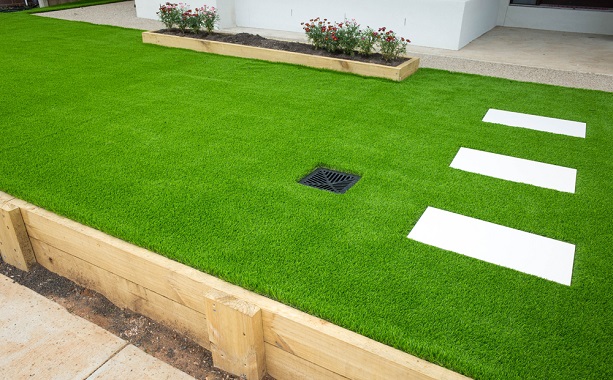How to clean artificial grass
All sorts of debris can get into a lawn — fallen leaves, pet hair and urine, spilled drinks, twigs, dust, and dirt, to name a few. This is why regularly checking on synthetic grass is essential, as it prevents a build-up of things that will eventually start to smell or decompose. This can affect the fibres of the grass and initiate moss growth.
Follow these steps instructing how to clean the grass to get your lawn looking its best again.
Clear debris
Start by removing any debris from the lawn. Large debris, such as branches or odd bits of rubbish, are easy to spot and can be picked up by hand.
Smaller bits of debris (leaves, seeds, general dirt etc) won’t just break down and sink into the soil of artificial grass. Pile it into a corner of the garden using a broom, plastic rake, or leaf blower. Grab a dustpan and brush to scoop up the debris. Place it into the refuse sacks, and you’ll have improved the look of the artificial grass in no time.
Keeping on top of debris results in a greener artificial lawn and more manageable outdoor space. It’s important to note that it’s much easier to remove leaves when they are fresh.
Wash it down
A blast of the hose works well for anything stubborn. Spray artificial grass with a hose to remove dirt, dust, pollen and other airborne pollutants. The majority of artificial lawns are all-permeable, so they will allow any liquid to pass through easily.
Brush regularly
It’s a good idea to brush fake grass regularly, against the pile direction of the grass. It will make a noticeable difference to the appearance and condition of a lawn as it redistributes the sand infill and returns the blades to an upright position. It will also make light work of any leaves or twigs.
An electric or petrol-powered brush is more convenient for covering larger grass areas quickly. Areas that are walked on more often may need more frequent brushing to prevent blades from looking flattened or trampled.
Use scented sprays
Pet owners can be worried about their furry friends leaving behind unwanted odours after doing their business. Thankfully, dedicated scented sprays and fragrances will leave artificial grass smelling as good as new. Follow the application instructions and the lawn will be pong-free.

